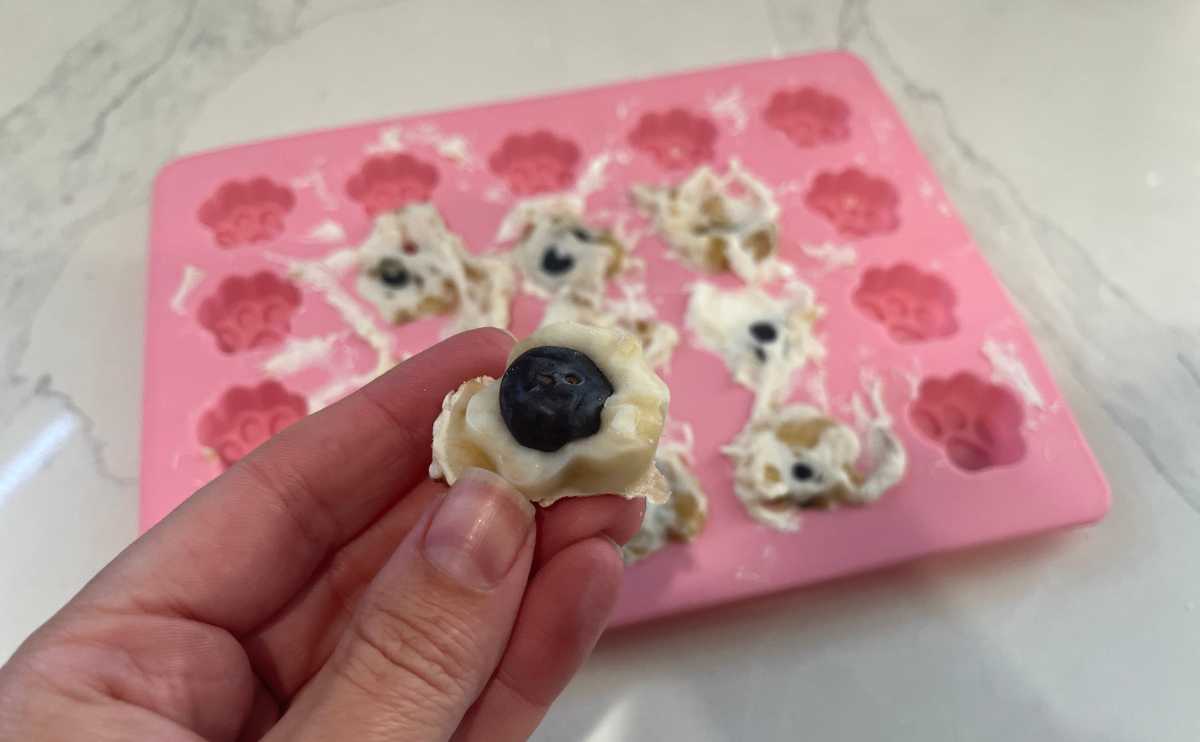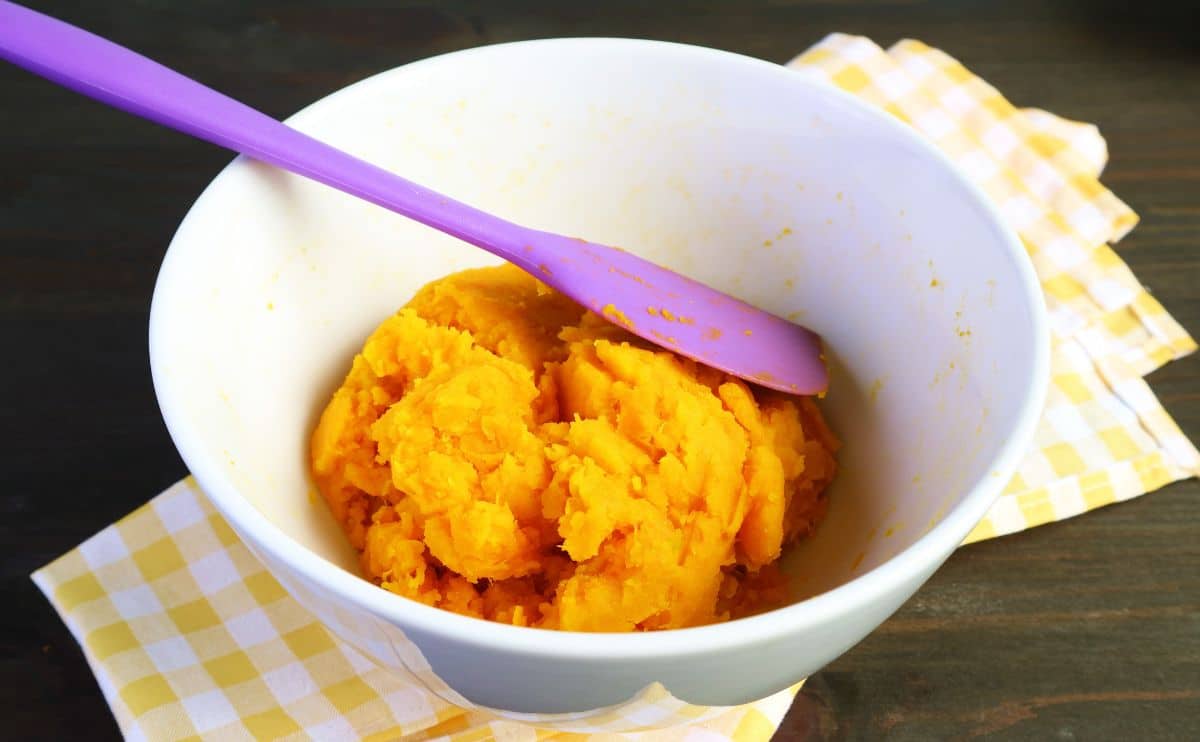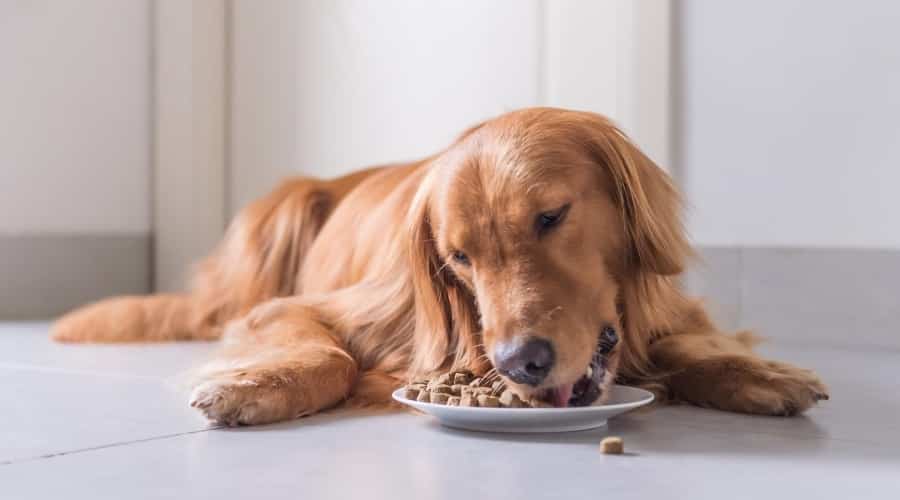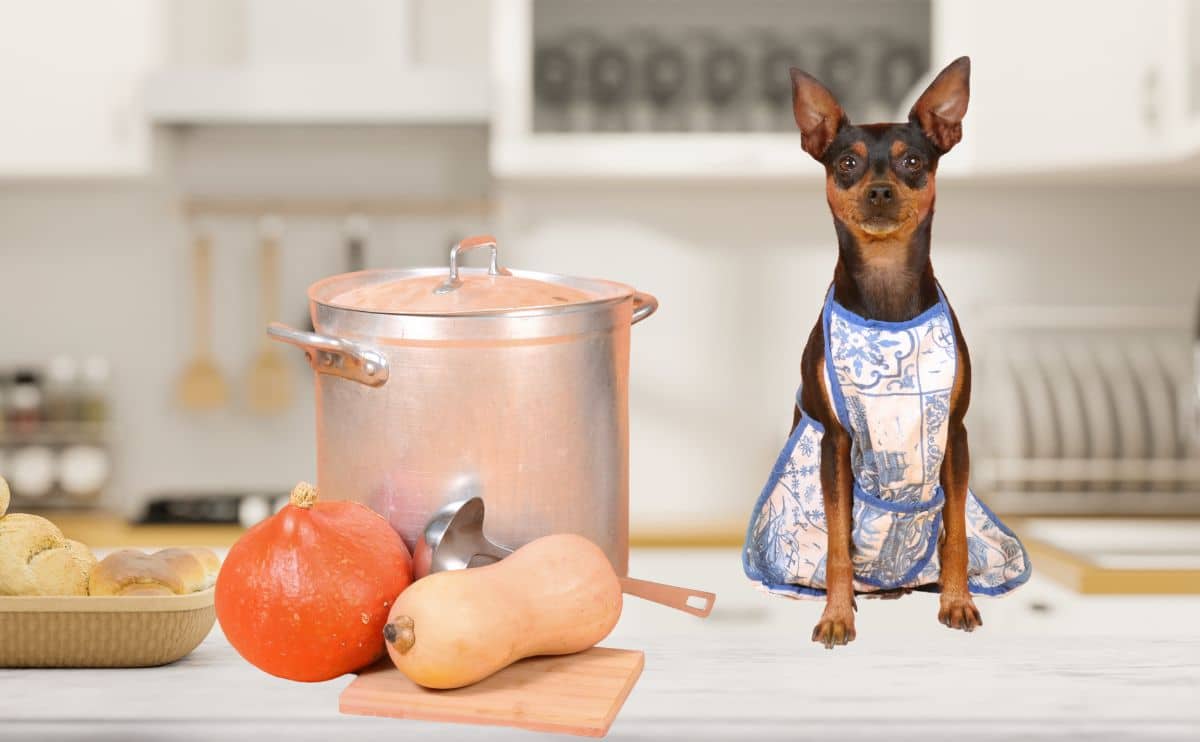Can Dogs Eat Cabbage? Learn About This Silent Killer (Of Fresh Air)
When you purchase through links on our site, we may earn a commission. Here’s how it works.
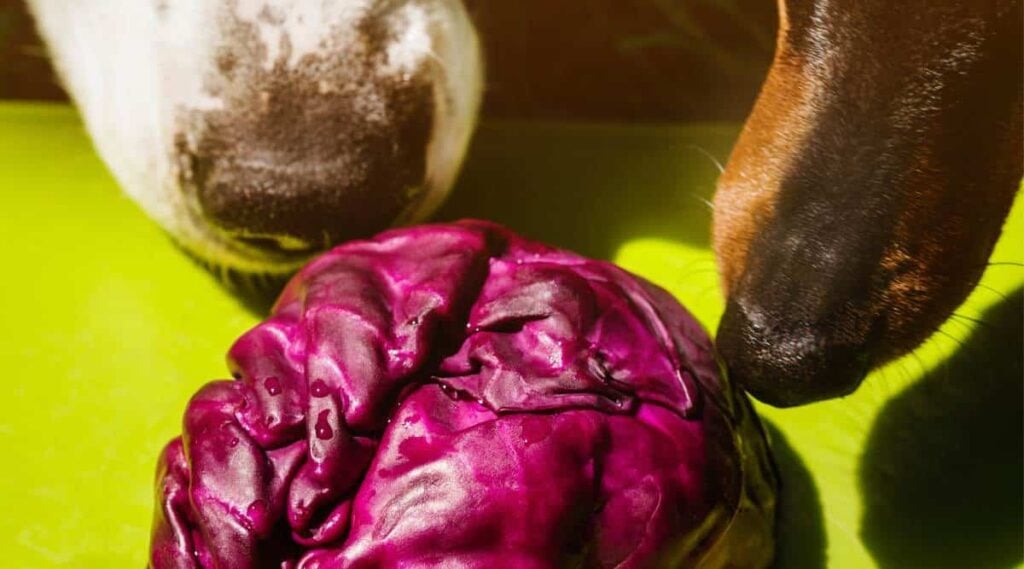
Cabbage—crunchy, nutritious, and a silent-but-deadly menace to fresh air everywhere. This leafy member of the brassica family comes in green, red, and white varieties and sneaks its way into everything from stir-fries to coleslaw. It’s packed with vitamins and fiber, making it a staple in many human diets.
Table of Contents
But what about your dog? Can you share this veggie with your four-legged friend, or are you about to unleash a gastrointestinal disaster? Before you start tossing cabbage leaves into your pup’s bowl, let’s break down whether it’s a healthy treat or a recipe for airborne regret.
Can Dogs Eat Cabbage?
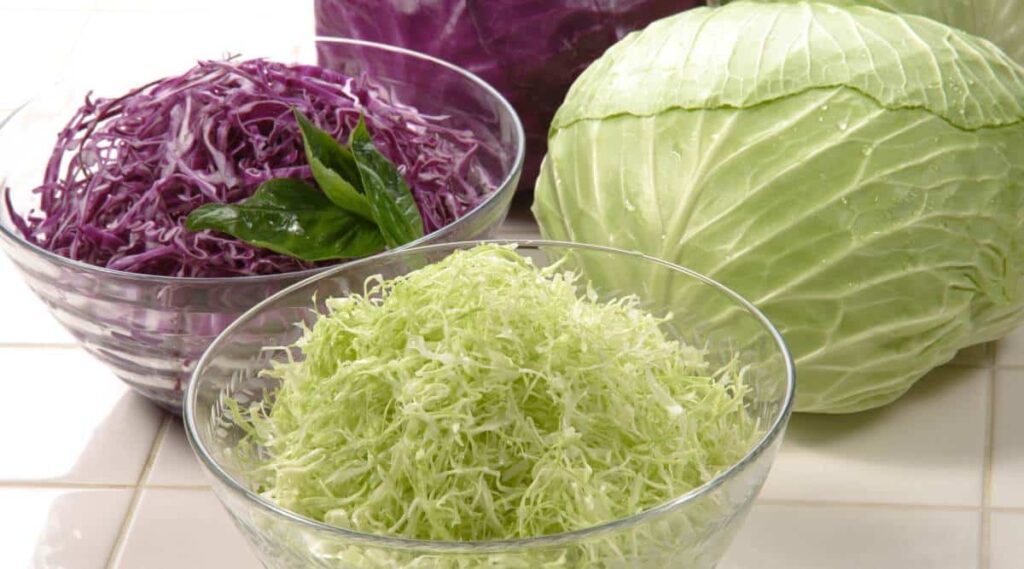
Yes, cabbage is safe for dogs! Not only is it non-toxic, but it’s also packed with nutrients that can benefit your pup’s health. Whether red, white, or green, all cabbage varieties are dog-friendly—though some might be friendlier to your nose than others (more on that later).
Cabbage is loaded with vitamins like C and K, which help support a strong immune system and healthy blood clotting. It’s also a great source of fiber, which can aid digestion—though too much might send your dog on an unexpected speed run to the backyard. Plus, it contains antioxidants that help fight inflammation, keeping your pup feeling their best.
One of the biggest perks of cabbage is its low-calorie content, making it a great snack for dogs who need to watch their waistlines. It adds crunch and variety to their diet without packing on unnecessary pounds. Just be mindful of how much you serve—moderation is key unless you’re looking to test the strength of your air freshener.
So yes, dogs can safely enjoy cabbage and might even love the taste. But before you start tossing them a whole head of it, there are a few things to consider—like how much is too much and whether cooking it makes a difference. Let’s dig into the details.
Is Cabbage Good For Dogs?

Cabbage is more than just a crunchy, low-calorie snack—it’s a nutritional powerhouse for dogs. Packed with essential nutrients and powerful phytonutrients, it offers a range of health benefits that support digestion, immune function, and overall well-being. Whether red, green, or white cabbage, each variety brings something valuable to the table (and your dog’s bowl).
Macronutrients: Fiber for Gut Health
Cabbage is naturally low in fat and protein, but it’s an excellent source of fiber, which plays a crucial role in digestive health. While the Association Of American Feed Control Officials (AAFCO) has no set guidelines for fiber intake in dogs, this complete carbohydrate helps regulate bowel movements, prevents constipation, and supports a thriving gut microbiome by feeding beneficial bacteria. A fiber-rich diet can also lower the risk of gastrointestinal diseases, including bowel cancer. Plus, it can help dogs feel fuller longer, making it an excellent snack for pups on a weight management plan.
Vitamins and Minerals for Whole-Body Health
Cabbage is more than just a low-calorie snack—it’s packed with essential vitamins and minerals that contribute to your dog’s overall well-being. Here’s a closer look at some of the key micronutrients found in this leafy vegetable.
Potassium
Potassium is a key electrolyte that supports muscle function, nerve signaling, and heart health. It also helps regulate fluid balance and blood pressure, keeping your dog’s body functioning properly. Cabbage provides a natural potassium boost, making it a healthy addition to their diet—especially for active dogs. However, excessive potassium may be a concern for dogs with kidney issues, so moderation is key.
Vitamin C
While dogs can produce vitamin C, additional dietary sources act as a powerful antioxidant, helping reduce inflammation and neutralize free radicals contributing to chronic diseases like cancer. It also enhances iron absorption, supporting oxygen circulation in the blood. Red cabbage is particularly rich in vitamin C, with nearly 85% of a human’s recommended daily intake per cup—though your pup won’t need quite that much.
Vitamin K
This vitamin plays a key role in blood clotting, ensuring wounds heal properly. It also helps with calcium absorption, which is essential for maintaining strong bones and teeth. A diet rich in vitamin K can support skeletal health and reduce the risk of fractures, especially in aging dogs.
B Vitamins
Cabbage contains various B vitamins, including B6, B9 (folate), and B1 (thiamine), which support brain function, hormone regulation, energy production, and immune health. These vitamins also contribute to a well-functioning nervous system, helping your dog stay alert and active.
Phytonutrients: Antioxidants for Long-Term Health
Cabbage is loaded with polyphenols, a type of phytonutrient known for its antioxidant and anti-inflammatory properties. Antioxidants help combat oxidative stress, a process linked to aging, chronic inflammation, and diseases like cancer. The vibrant red and purple hues in cabbage varieties come from anthocyanins, a natural pigments that supports heart health and brain health.
Dangers Of Cabbage For Dogs

Cabbage might be a nutrient-packed snack, but like anything in life (and dog diets), too much of a good thing can cause trouble. While it’s perfectly safe for dogs to eat in both raw and cooked forms, there are a few potential risks you should keep in mind before tossing them a crunchy leaf.
The Gas Factor
Let’s start with the most apparent danger: digestive upset. Cabbage is packed with fiber, which is great in moderation but can send your dog’s stomach into overdrive if they overeat.
If your pup overindulges, you might notice:
- Excessive flatulence
- Loose stools or diarrhea
- Vomiting
Most of the time, these symptoms clear up on their own within a couple of days. A bland diet of plain cooked chicken or fish with white rice can help settle their stomach. But if symptoms persist or get worse, a trip to the vet is a good idea.
Thyroid Troubles
In rare cases, too much raw cabbage can interfere with thyroid function. This is due to thiocyanate, a compound found in raw cabbage that can suppress thyroid activity if consumed in large amounts over time. While your dog would have to eat a lot of raw cabbage for this to become a real issue, it’s something to be aware of—especially for dogs with preexisting thyroid conditions.
Signs of hypothyroidism include:
- Fur loss and dry skin
- Lethargy or sluggishness
- Recurring skin infections
- Sad or “droopy” facial expression
- Seeking warmth more than usual (heat-seeking behavior)
- Unexplained weight gain
If you notice any of these symptoms, contact your vet to rule out thyroid issues. The good news? Cooking cabbage deactivates thiocyanate, making it the safer option if you’re feeding cabbage regularly.
How To Feed Cabbage To Your Dog
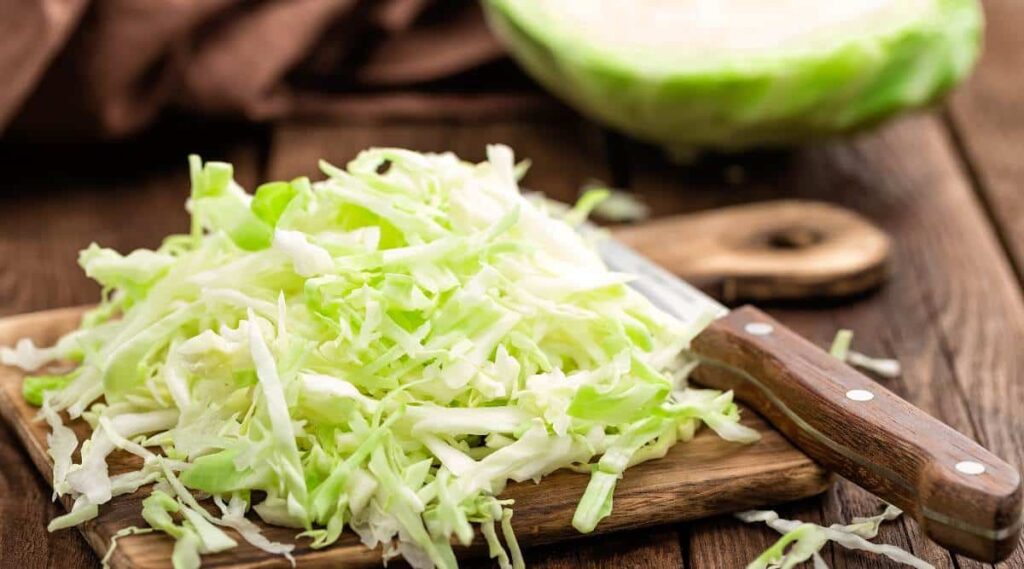
Cabbage is a surprisingly versatile veggie, and there are plenty of ways to incorporate it into your dog’s diet. Whether you serve it as a crunchy snack or mix it into their meals, this leafy green can provide a nice nutritional boost.
Raw vs Cooked: Which Is Best?
Both raw and cooked cabbage are safe for dogs, but cooked cabbage is the better option. Cooking makes it easier to digest and deactivates thiocyanate, the compound that can interfere with thyroid function if eaten in excess.
The best cooking methods are:
- Steaming: Retains the most nutrients while making the cabbage softer and easier on your dog’s stomach
- Boiling: Also a safe option, though some water-soluble vitamins may be lost in the process
While roasting is technically fine, it usually involves oils or seasonings that can upset your dog’s stomach. Plain is always best—no butter, salt, garlic, or onions (which are toxic to dogs).
Serving Ideas
- Chop it into bite-sized pieces and offer it as a crunchy, low-calorie treat
- Mix it into your dog’s regular food for an added nutrient boost
- Blend it into homemade dog-friendly meals (with vet approval) for variety and fiber
- Freeze small cooked portions for a refreshing summer snack
Moderation Is Key
Cabbage should always be considered a supplemental treat, not a meal replacement. Your dog’s primary diet should come from a complete and balanced dog food that provides all essential nutrients. Treats—including vegetables like cabbage—should make up no more than 10% of your dog’s daily calorie intake to avoid throwing off their nutritional balance.
Check With Your Vet First
Consult your vet before adding cabbage or any new food to your dog’s diet. Every dog is different, and what works well for one might not suit another—especially if they have preexisting health conditions like thyroid issues or sensitive stomachs.
How Much Cabbage Can I Feed My Dog?
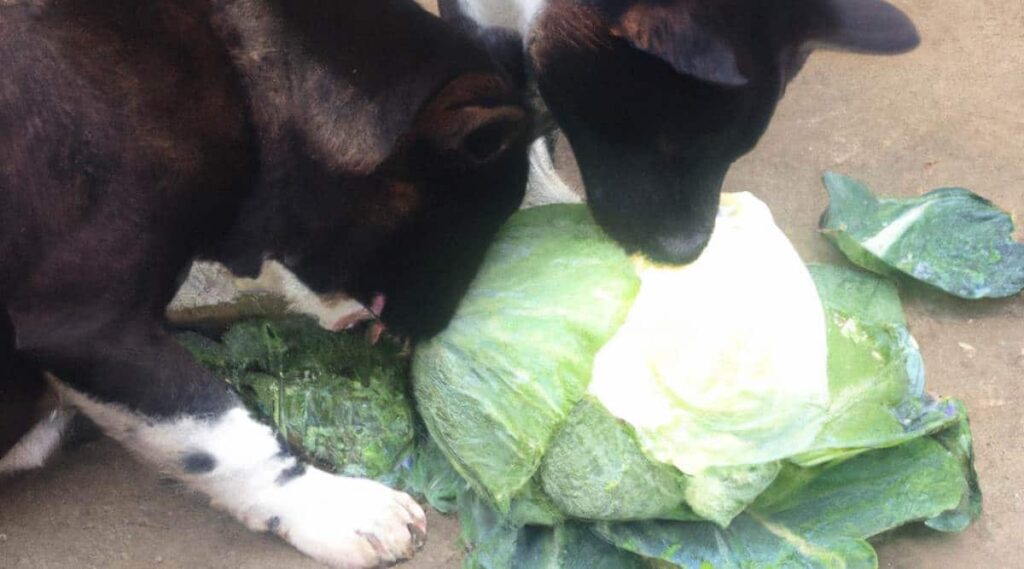
Even though cabbage is packed with nutrients, too much of a good thing can still cause problems. Like any treat or extra food, it should be given in moderation to avoid digestive upset, excessive gas, or unwanted weight gain. While cabbage is low in calories, overfeeding can still throw off your dog’s nutritional balance—especially if it starts replacing essential nutrients from their regular diet.
A good rule of thumb is that treats and extras should make up no more than 10% of your dog’s daily calorie intake. For most dogs, this means a couple of spoonfuls of cooked cabbage is plenty. The exact amount depends on your dog’s size:
- Small dogs (under 20 lbs): Start with a teaspoon and gradually work up to a tablespoon if they tolerate it well.
- Medium dogs (20–50 lbs): 1–2 tablespoons of cooked cabbage is a safe portion.
- Large dogs (50+ lbs): Can handle a few spoonfuls, but start small to test their digestive tolerance.
If you’re feeding raw cabbage, reduce the portion slightly, as it contains more fiber and may be harder to digest. Always introduce it gradually to avoid an upset stomach, and monitor your dog for any signs of bloating, diarrhea, or excessive gas (which, given cabbage’s reputation, is a very real possibility).
If your dog has a sensitive stomach or preexisting digestive issues, check with your vet before adding cabbage to their diet. Otherwise, when served in moderation, cabbage can be a great, crunchy addition to your dog’s treat rotation!
How Often Can I Feed My Dog Cabbage?
Cabbage has health benefits, but moderation is key, like any treat. Feeding too much too often can lead to digestive issues, gas, and even weight gain if it starts replacing essential nutrients in your dog’s diet. Plus, variety is important—rotating different vegetables keeps your dog’s meals interesting while ensuring they get multiple sources of vitamins, minerals, and antioxidants.
As a general guideline, feeding cabbage once a week is plenty for most dogs. This allows them to enjoy the nutritional benefits without overloading their digestive system. If you include veggies in your dog’s diet more frequently, consider switching it up with other dog-safe options like carrots, green beans, or zucchini.
If you start feeding cabbage more often and notice your dog becoming unusually gassy, it might be time to dial it back. Every dog’s tolerance is different, so pay attention to how they react and adjust accordingly. When in doubt, your vet can help determine the best portion and frequency for your dog’s needs.
Which Vegetables Can Dogs Eat?
Cabbage isn’t the only veggie that can benefit your dog—plenty of other nutritious options can add variety, flavor, and extra nutrients to their diet. Picking different vegetables keeps mealtime interesting and stimulating while providing a broader range of vitamins and minerals.
Other vegetables that are safe and healthy for dogs include:
- Broccoli
- Brussels sprouts
- Carrots
- Celery
- Green beans
- Peas
- Spinach
- Kale
- Potatoes and sweet potatoes
- Tomatoes
- Sweetcorn
There are some vegetables that aren’t good for dogs and should be avoided. These include:
- Asparagus: Athough it’s not toxic, it can be very hard to digest raw and, when cooked, loses its nutritional value
- Corn on the cob: This can cause blockages in the digestive tract
- Garlic: This is toxic to dogs
- Leeks: These are related to onions and are toxic to dogs
- Mushrooms: Wild mushrooms can be poisonous to dogs
- Onions: These are highly toxic to dogs
Frequently Asked Questions
Here are some frequently asked questions about dogs and cabbage. Don’t see yours? Ask us in the comments!
Can Dogs Eat Raw Cabbage?
Yes, dogs can eat raw cabbage, but only in moderation. Raw cabbage is high in fiber, which can be harder to digest and may cause gas or bloating. Cooking it makes it easier on their stomach.
Can Dogs Eat Cooked Cabbage?
Yes, dogs can safely eat cooked cabbage, and in fact, it’s often the better option. Cooking cabbage—especially by steaming or boiling—makes it easier to digest and reduces the risk of gas or bloating.
Can Puppies Eat Cabbage?
Yes, but in moderation. Puppies have more sensitive digestive systems, so start with tiny amounts of cooked cabbage to see how they handle it.
Can Cabbage Cause Thyroid Problems In Dogs?
In very large amounts, raw cabbage contains thiocyanate, a compound that can interfere with thyroid function over time. However, this is rare unless a dog eats excessive amounts regularly. Cooking cabbage neutralizes thiocyanate, making it the safer option.
Can Cabbage Help With My Dog’s Digestion?
Yes, cabbage contains fiber, which can support gut health and regular bowel movements. However, too much fiber at once may cause loose stools or diarrhea, so portion control is important.
More Human Foods That Are Safe For Dogs
Cabbage isn’t the only human food that can be a healthy addition to your dog’s diet. Many other fruits and vegetables offer valuable nutrients, fiber, and antioxidants while adding variety to their meals. From crunchy carrots to sweet blueberries, many human foods are not only safe but can also support your dog’s overall health—when given in moderation. Curious about what else you can share with your pup? Check out our article covering 32 human foods that are safe for dogs.
